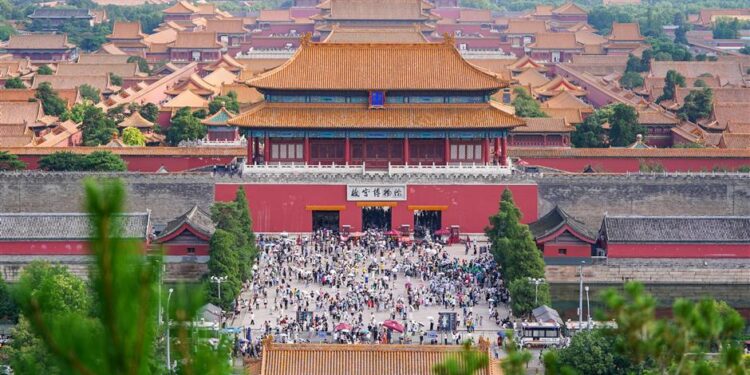July 27 – Beijing Central Axis named as World Heritage Site at the session of UNESCO World Heritage Commission in New Delhi.
The “Beijing Central Axis: A Building Ensemble Exhibiting the Ideal Order of the Chinese Capital” was designated as a World Heritage Site during the 46th session of the UNESCO World Heritage Committee in New Delhi on Saturday.
This addition brings China’s total to 59 World Heritage Sites.
The Beijing Central Axis, located at the heart of the ancient city of Beijing, stretches 7.8 kilometers from the Bell and Drum Towers in the north to the Yongdingmen Gate in the south. It dates back to the 13th century and has been developed over seven centuries.

The Beijing Central Axis is recognized as a “building complex” within cultural heritage, encompassing 15 heritage elements, that originated in the Yuan Dynasty (1279-1368). It represents a core part of the old city’s urban planning.
Experts stated that the Beijing Central Axis represents a unique example of urban landscape ideals and core architectural groups from the East, filling a gap in the World Heritage List and showcasing outstanding universal value.
Lü Zhou, director of the National Heritage Center at Tsinghua University, pointed out that Beijing meticulously planned its Central Axis, contrasting it with the organic development of medieval European cities, which were shaped by various factors and resulted in complex urban forms.
Jiang Bo, a professor at the Institute of Cultural Heritage at Shandong University, described the Beijing Central Axis as a “masterpiece” with unique Eastern qualities in urban landscape history, influencing urban design concepts across the Korean Peninsula, Japan, and Vietnam.
In addition to the Beijing Central Axis, the Badain Jaran Desert in Inner Mongolia and the Migratory Bird Sanctuaries along the Yellow Sea-Bohai Gulf (Phase II) were also added to the UNESCO World Heritage List during the same event.

China now has 59 World Heritage Sites, including 40 cultural, 15 natural, and 4 mixed heritage sites. The UNESCO conference, which runs until July 31, includes reviewing 27 new nominations and assessing the conservation status of 124 existing sites.
Related Posts
Sino Italian Heritage Learning Boosts Cooperation
Chinese Modernization:Material and Cultural-Ethical Advancement

















